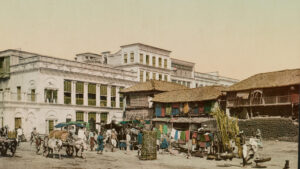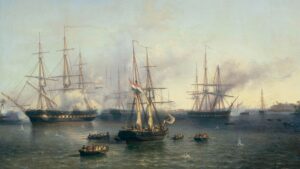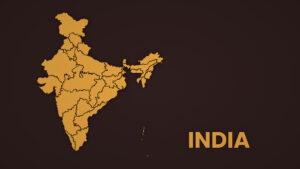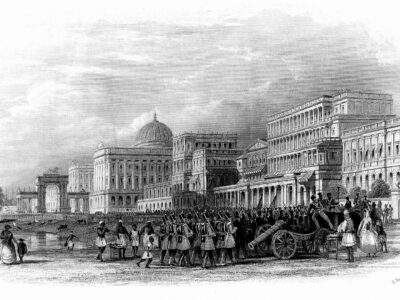The significance of the earliest cultures, their roots and settlements, their scriptures, discoveries and inventions are often neglected by the prevailing generation of people. Learning from the past is considerable wisdom in one’s life journey; whatever we ignore today might be a necessity in history. It takes ages for development and certainly does not ends in a day.
Ancient India witnessed the migrations and settlements of several ethnicities, religions and tribes, contributing to the evolution of civilization, art, architecture, cultures, heritage, language, literature and traditions. As per the historical shreds of evidence, the term “Hindu” originates in the Persian inscriptions that date back to 5 BCE and derives from the Sanskrit word “Sindhu”, denoting the region in the Indus valley and not the religion. Linguistically, the letter “S” gets replaced by “H” in Persian.
The glorious land of India, often called “Jambudvipa”, extended between the Himalayas and the Indian Ocean, the valley of Brahmaputra and beyond the Indus valley. Several emperors such as Ashoka, Samudragupta and Pulakeshi made successful attempts to conquer entire ancient India to establish authority and diplomatic harmony. The minds of all kings and conquerors perceived the whole of India as one, and because of the spread of this idealogy, the Persian and Arabian rulers called India “Hind” and later “Hindostan”. Constant efforts to establish linguistic and cultural conformity were notable in ancient India; consequently, Prakrit served as a lingua franca among the subjects of diverse speech. Sanskrit acquired the position and served as the official language throughout the sub-continent.
Although the values, customs and cultures were reformed from time to time, modern India still observes the deep roots of social inequality, discrimination, ancient traditions and ritualistic practices among the people. A look back at ancient India is essential and may help the present-day generation to learn and understand the barriers and to think of progress.
CONNECTING TO THE PAST THROUGH SOURCES
Archaeological methods, together with advanced technology, help us to detect and retrieve historical remains that establish a connection with different periods of the past. Our ancestors left considerable remains that communicate to the future generation, and the nature of historical remains may vary among the sources and, therefore, the approach to interpreting the same.
Fossils, cave paintings & stone tools
Fossils of humans, animals and plants, cave paintings and stone tools are reliable sources to trace back and study life in the pre-historic period as there were no written scriptures or language usage. With the techniques like radioactive carbon dating (C14 dating), it is possible to determine the age of the fossils. Cave paintings and tools reveal some information about life during those times.
Stone edicts & inscriptions
In India, though the oldest inscriptions were found during the excavation of the Harappan sites of the Indus valley civilization, decoding those inscriptions remained a challenge as those were merely symbolic. Only after 3 BCE did decipherable writing come into light with Mauryan inscriptions. The earliest decipherable inscriptions, i.e., the edicts of Ashoka, were engraved on stone and written in Prakrit; the Brahmi script prevailed in most parts of India. The culture of engraving the inscriptions on stone continued until the medieval period. Many inscriptions serve as permanent records on the walls of temples throughout India, and inscriptions were also carved on metal plates, stone seals, pillars, and wooden tablets. Inscriptions served various purposes in history, carrying royal mandates and orders, social and religious information, general or administrative guidelines and law, grants and donative records or any other information. Prakrit, Sanskrit, Tamil and Telugu are widely used languages in Indian inscriptions.
Coins
Ancient coins in India were minted using moulds in various metals like lead, copper, silver and gold. Many ancient coins and moulds were found both on the surface and during the excavations. These coins were stored in earthenware or metals during those times, and discoveries revealed many coins minted abroad. Antique coins are vital sources that help us to reconstruct history as they depict the names and figures of kings and godheads and provide information about the age, region of circulation, trade connections and commerce.
Scriptures
India has been known for its literary works from time immemorial. People of Indus culture were aware of writing but were wise to ignore it because of its non-decipherable or symbolic nature. The earliest manuscripts are various Vedic texts containing religious ideas and concepts. Most of such works provide information about the moral, social, economic and political practices; they do not stand evident to the certainty of time and place but rather result in the rise of confusion and conflicts regarding the theory, events and timeline. Enormous works of material literature such as Arthashastra of Kautilya, Ashtadhyayi of Panini, Abhignanashakuntalam of Kalidasa and other works compiled after 450 BCE, that deal with law, economics, grammar, poetry, astronomy and general science supply valuable information with some more clarity when compared to the earlier Vedic works, including the information about the author, time and place of compilation and socio-cultural practices prevailing during their period.
Ancient scriptures in Indian history conclude partial real information and demand further cross-verification with other reliable sources.
Foreign travellers and their accounts
Ancient India attracted many travellers from various regions of the world. Some iconic scholars and travellers are Megasthenes, Hieun Tsang, Fa-Hien, Ibn Battuta, Alberuni, Marco Polo and others who contributed comprehensive information about India in their accounts during their visits. These foreign accounts shed some light on trade and commerce, economies, traditional routes, religion, cultures and traditions, and people and their lifestyles. The works of these foreign travellers act as secondary or supportive sources for reconstructing Indian history.
Other sources
Several other sources, such as old paintings, sculptures, masonry, architecture, and customary practices, extend their support to build up historical theories in a creative way. Paintings depict the pictures of royals and nobles, provide ideas about the people and culture, and illustrate major historical events. Sculptures in India help us to identify the figureheads of kings and other noble personalities, deities and religious symbols. Masonry attempts to express wisdom, beliefs and moral values. Architecture and built structures are primary sources for historians to construct their theories in various aspects.
The historical sense of ancient Indians was poor and unorganized in one dimension and considerable in other dimensions; their records are peculiar enough to create challenges, confusion and conflicts for historians to revamp their theories. So far, the history of India has been formed based on the sources mentioned above, and there are opportunities to improvise the theories further with the help of modern science and advanced technology.









